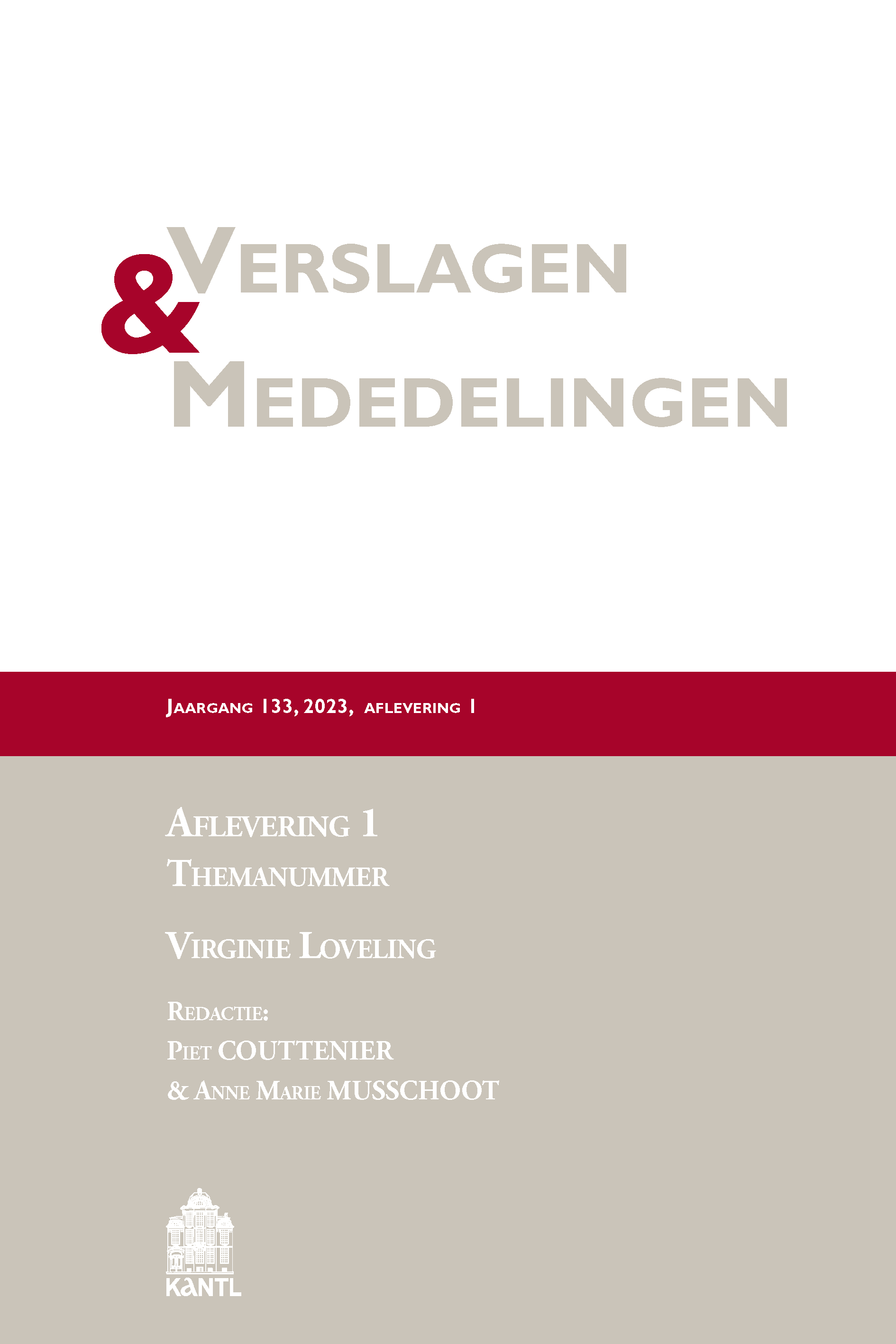De boekdelen van het lichaam
Lichaamstaal tussen psychologisch en sociaal realisme in Virginie Lovelings romans
Samenvatting
Samenvatting – De romans van Virginie Loveling staan bekend om hun psychologisch realisme. In werken zoals Een dure eed (1891) en De twistappel (1904) zou de psychologische analyse tot volle bloei komen. In het realisme en naturalisme van eind negentiende en begin twintigste eeuw is de voorstelling van gedachten en gevoelens echter op complexe manieren verbonden met de uitdrukkingsmiddelen van het lichaam. Drukt het lichaam rechtstreeks uit wat personages voelen of onderdrukt het die gevoelswereld? Kan het lichaam iets weten wat het personage zelf niet schijnt te weten? Dit artikel gaat in op de lichaamstaal in Een dure eed en De twistappel om de romantechniek en de psychologische thematiek van Lovelings romans preciezer te duiden.
Abstract – Virginie Loveling’s novels are known for their psychological realism. In works such as Een dure eed (1891) and De twistappel (1904) the psychological analysis is in full bloom. In the realism and naturalism of the end of the nineteenth and the beginning of the twentieth century, however, the evocation of thoughts and feelings is connected in complex ways with body language. Does the body directly express what characters feel or does it suppress those feelings? Can the body ‘know’ something the character does not know? This article examines body language in Een dure eed and De twistappel to specify the narrative technique and the psychological themes of Loveling’s novels.
- Auteurs behouden de auteursrechten en geven het tijdschrift het recht van eerste publicatie van het werk onder een Creative Commons Attribution Licentie die anderen het recht geeft het werk te delen onder vermelding van het auteurschap van het werk en de eerste publicatie in dit tijdschrift.
- Auteurs mogen separate, additionele contractuele overeenkomsten aangaan voor het niet-exclusief distribueren van de door het tijdschrift gepubliceerde versie van het werk (bv. plaatsing in een institutionele repository of publicatie in een boek), onder vermelding van de eerste publicatie in dit tijdschrift.
- Auteurs hebben het recht en worden aangemoedigd om hun werk online beschikbaar te stellen (bv. in institutionele repositories of op hun website) voorafgaand aan en gedurende de inzending, aangezien dat kan leiden tot productieve discussies, sneller en meer citaties van het gepubliceerde werk (Zie The Effect of Open Access).


